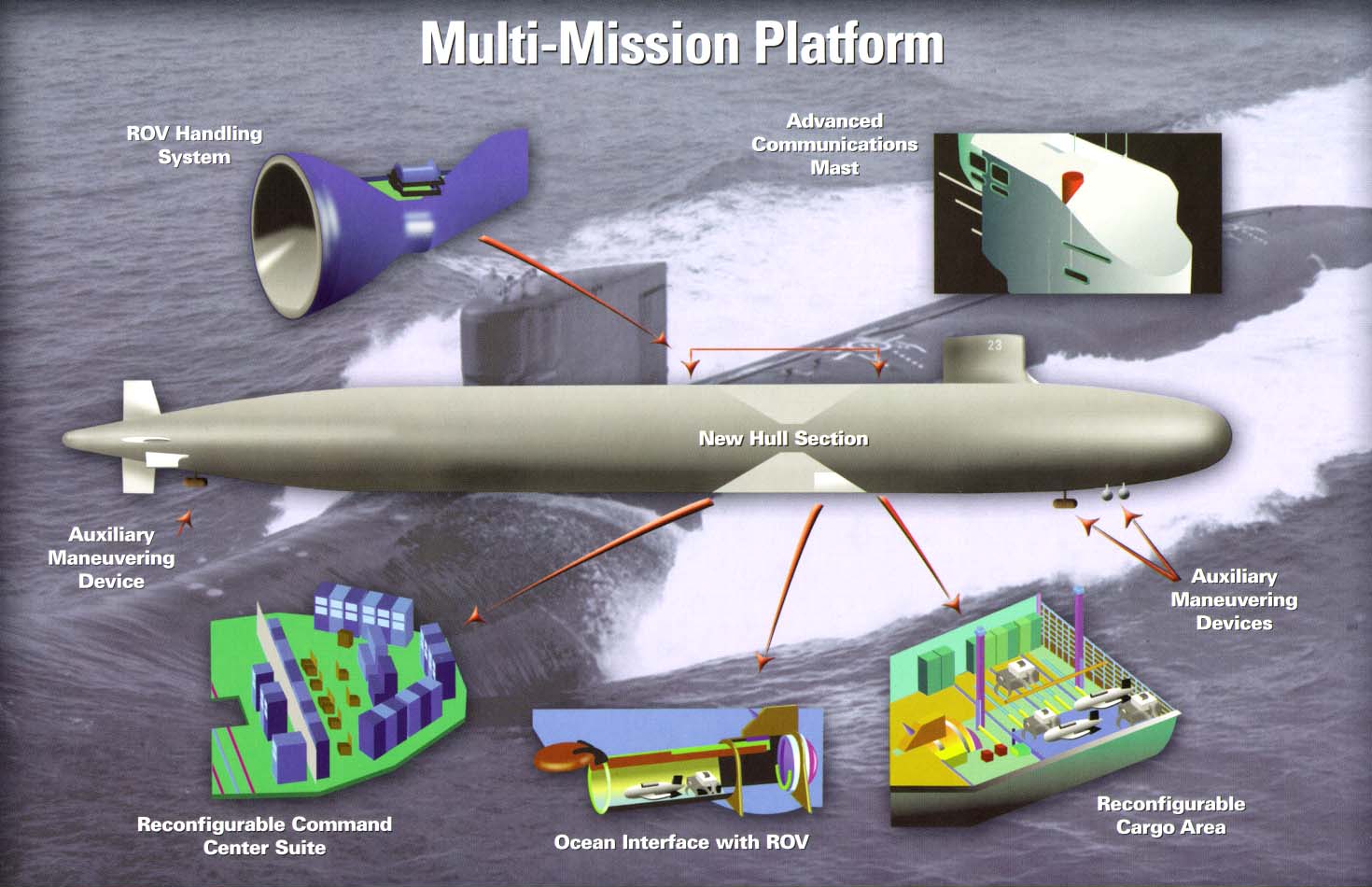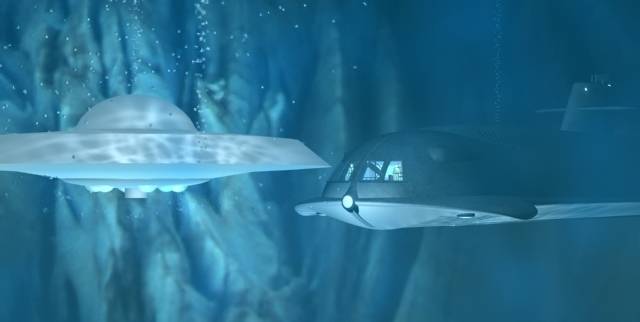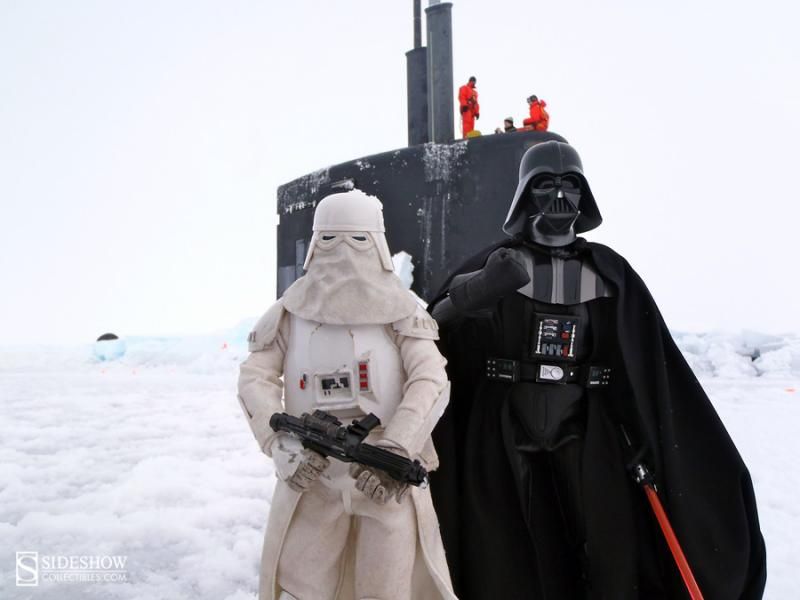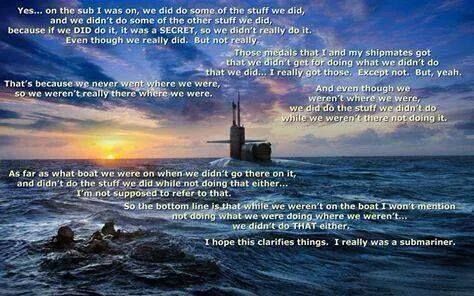
Posted on 02/15/2016 10:18:21 PM PST by sukhoi-30mki
Secretive U.S. Navy Submarine Went on a Dangerous Mission
Clues suggest spying in 'extremely hazardous' waters
On Jan. 20, 2013, the Seawolf-class attack submarine USS Jimmy Carter left her home port in Bangor, Washington. Less than two months later, the submarine appeared at Pearl Harbor in Hawaii for repairs.
It was all quite mysterious. During her time at sea, we don’t know where Jimmy Carter was or what her crew of nearly 150 were precisely doing. The Seawolf class is one of the most secretive weapons in America’s arsenal, and information about the Navy’s “Silent Service†is difficult to discover … by design.
We know Jimmy Carter was on some kind of mission, which the ship’s official annual history vaguely referred to as Mission 7. “Performed under a wide range of adverse and extremely stressful conditions without external support, this deployment continued USS Jimmy Carter‘s tradition of excellence in pursuit of vital national security goals,†the history stated.
In this vessel’s official chronology, the mission warrants as much mention as a picnic in July and the crew’s Halloween party three months later. But Mission 7 was enough to earn the sailors a Presidential Unit Citation, which rewards “extraordinary heroism in action against an armed enemy,†according to an official Navy description.
As the last of the Seawolf-class attack submarines, Jimmy Carter is unique. During her construction, the Pentagon added a special 100-foot-long, 2,500-ton module called the Multi-Mission Platform. By the sailing branch’s own admission, this space can accommodate undersea drones, SEALs and much more.
More importantly, the hourglass-shaped section might allow specially trained teams to find and tap undersea communications lines and plant listening devices on the ocean floor. It’s more than likely that the submarine is one of the Pentagon’s most stealthy spies.
Another clue is the Presidential Unit Citation for Mission 7. For the sailing branch, this is akin to giving the boat itself a Navy Cross, the service’s second highest award. The criteria makes it clear that the mission must have been “extremely difficult and hazardous.†But the Secretary of the Navy’s citation for the sub’s 2013 performance is equally obtuse.
Along with sailors from the even more obscure Detachment Undersea Research and Development, Jimmy Carter “successfully completed extremely demanding and arduous independent submarine operations of vital importance to the national security of the United States,†is how the memo described the operation. Both units “overcame numerous obstacles to safely execute these demanding and complex tasks without incident.â€
Two pictures attached to the report show the ship’s captain, Cmdr. Brian Elkowitz, and other officers holding the framed citation and associated pennant. In both cases, Navy censors blacked out one individual’s face, ostensibly for privacy reasons.
War Is Boring obtained these documents through the Freedom of Information Act. Every year, all ships, subs, squadrons of aircraft and commands on land are required to turn a historical report over to the Naval History and Heritage Command in Washington, D.C. But there’s no requirement that the narrative go into any great or specific detail. And Jimmy Carter‘s history is more a record of the secrecy surrounding the ship’s than her actual activities.
While already guarded about submarines in general, the Navy is especially tight-lipped about the Seawolf-class boats. Originally intended to be the most advanced undersea attackers, Washington slashed the program after the Cold War and the threat of equally high-tech Soviet submarines appeared to evaporate.
Instead of a planned fleet of nearly 30 ships, the Pentagon bought just three for more than $3 billion each. At more than 350 feet long and with a submerged displacement of more than 9,100 tons, the Seawolf class is the most expensive attack submarine ever built and the second most expensive undersea vessel of any type.
The sailing branch eventually grouped together the USS Seawolf, Connecticut and Jimmy Carter as the core of Submarine Development Squadron Five. The unit’s spartan website states it is responsible for testing new undersea listening gear and remote-controlled submersibles, either tethered to a larger sub or able to operate on their own.
The group is also in charge developing new tactics for fighting in the Arctic, a region where submarines can easily hide from their opponents. Despite their current mission, each ship still has eight torpedo tubes, which can also fire Harpoon anti-ship and Tomahawk cruise missiles.
The unit makes no mention of intelligence gathering. But while the name implies a solely experimental function, the sailing branch routinely uses these types of monikers for special or elite groups. The near legendary terrorist-hunting SEAL Team Six is officially called the Naval Special Warfare Development Group. The service describes the spy ships it runs together with the U.S. Air Force as “missile range instrumentation ships.†The squadron responsible for flying around the president and his staff is now simply called Marine Helicopter Squadron One, but still uses the acronym HMX-1 — a nod to its “experimental†origins.
Further lending credibility to Jimmy Carter‘s real spying mission, the Navy retired the equally shadowy USS Parche just four months before putting the new submarine into action. The sailing branch says Parche is the most decorated ship ever, with nine Presidential Unit Citations among other awards.
Completed in 1974 as a Sturgeon-class attack sub, the Pentagon specifically upgraded the Parche to break into Soviet communications lines. Between 1978 and 1979, the submarine reportedly tapped into cables in the Sea of Okhotsk north of Japan as part of a mission dubbed Operation Ivy Bells.
“The Navy, with strong input from the NSA, was first sending Parche to Okhotsk to plant a second recording pod … to greatly increase capacity at the tap site,†Sherry Sontag and Christopher Drew wrote in Blind Man’s Bluff: The Untold Story of American Submarine Espionage. “She was being sent, in part, to prove herself before anyone dared to send her to that other, far more dangerous sea.“
Success at Okhotsk paved the way for missions in the far more crowded — and therefore dangerous — Barents Sea. To hide from Moscow’s sub-hunters, Parche hid under the cover of the Arctic ice as she sneaked into congested shipping lanes.
Nearly a decade later, the Navy sent Parche off for another overhaul. In 1991, the sailing branch sent the newly refurbished sub to join Submarine Development Squadron Five.
Though their book was published before the submarine was finished, Sontag and Drew explained that Jimmy Carter‘s expanded mid-section was to make room for the same gear Parche had carried into Soviet waters. No doubt the Navy and its partners at the NSA have made improvements since then.
While General Dynamics Electric Boat was still putting the submarine together in 2001, NSA director Lt. Gen. Michael Hayden laughed off claims about breaking into undersea cables in an interview with the Wall Street Journal. “I’m not going to sit here and dissuade you from your views,†Hayden said, before refusing to comment on Jimmy Carter‘s mission.
Two years later, the Journal again reported that the submarine’s role suggested an undersea spook, citing “people knowledgeable about it.†After more than a decade of apparently very active service, little else has slipped out about the ship or her operations.
We could easily have to wait another decade or more for there to be any real confirmation — likely from a book like Sontag and Drew’s rather than the Navy — about Jimmy Carter‘s unique history and details about Mission 7.

What were they doing? Hiding Teh One’s Birth Certificate?
loose lips, dudes
I have a real problem having ships named for living people, worse yet, for living politicians, worse than that, for execrable living politicians.
This is nothing new. It has been going on for at least 55 years with the nuke boats.
Yes, as far as I know, nothing has been declassified. We did oceanographic research, that is all.
Not the first time Jimmy Carter was in over his head.
reminds me of the stories in Blind Man’s Bluff
They were trying out their new ‘Caterpillar Drive’ system...? Lol!
We didn't just do "oceanographic research"; people asked where we went and the answer was generally that we "went north" (unless we went south to Autec). I find the website name ironic - they don't make this speculative mission sound at all boring.

Its all in Hillary Clinton’s email!

Hillary’s emails probably have a lot of into on the sub

My guess for possible activities. Renew, repair, replace items planted during the previous mission, check on the North Koreans, check on the Chinese “islands” in the South China Sea.
My guess: Not worth guessing. Either you’re right and shouldn’t be talking, or you’re wrong and there is no point in talking.
I am happy to say what port calls I’ve done and how many times I’ve been to Port Canaveral or San Diego and AUTEC or SOAR, but I don’t see a benefit in speculating about missions. I spent several years in uniform wearing gold dolphins, and then “consulted” for the Department of Defense, before taking my math skills to the political realm, but that is all the detail that even my wife knows. Our boats do cool stuff - oceanographic research, up north - nothing more.
I don’t remember that episode (I don’t think I’ve ever actually seen them all).
If that’s lifted from an actual episode.
Thank you for your service to our country, Sir.
This is the stuff that keeps Vladimie Putin awake at night.
Disclaimer: Opinions posted on Free Republic are those of the individual posters and do not necessarily represent the opinion of Free Republic or its management. All materials posted herein are protected by copyright law and the exemption for fair use of copyrighted works.